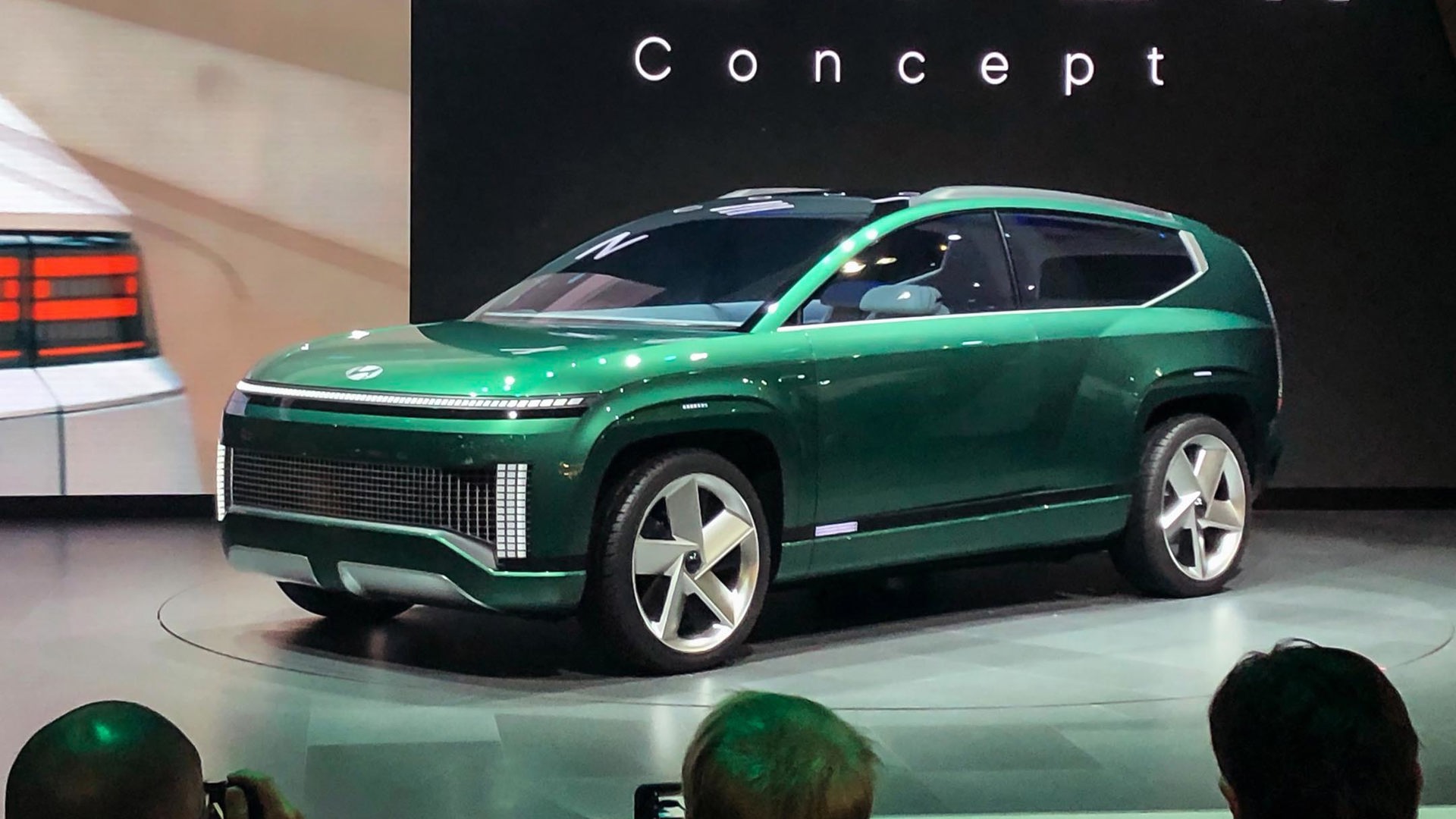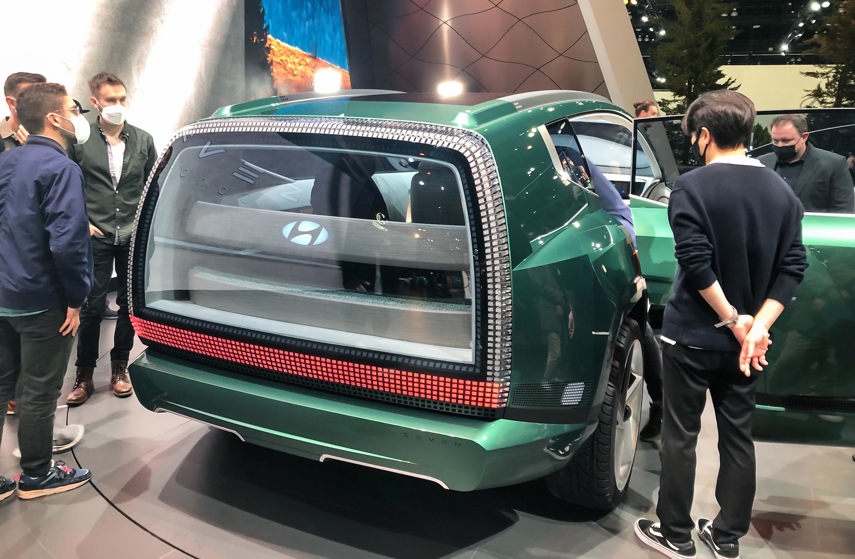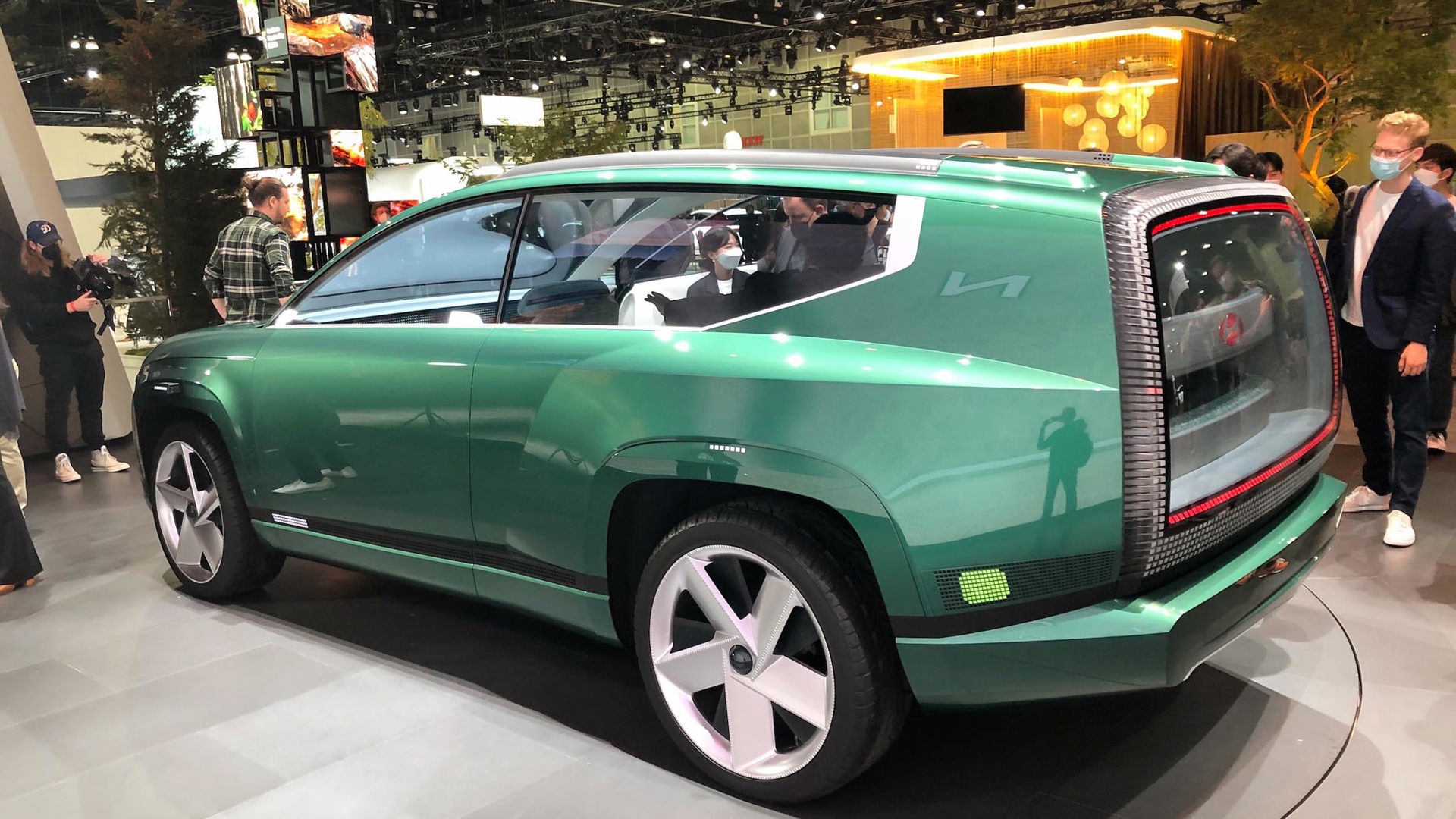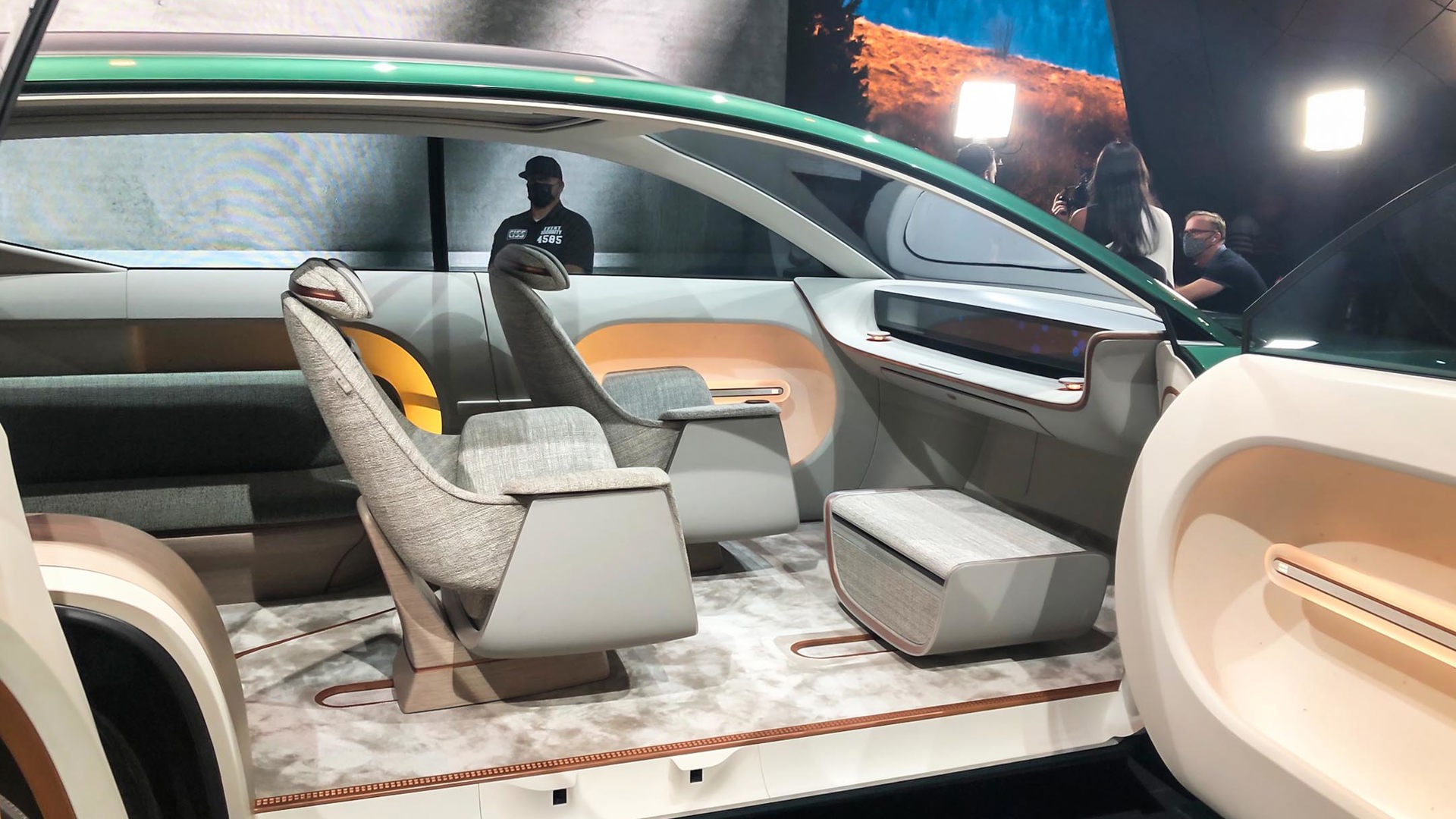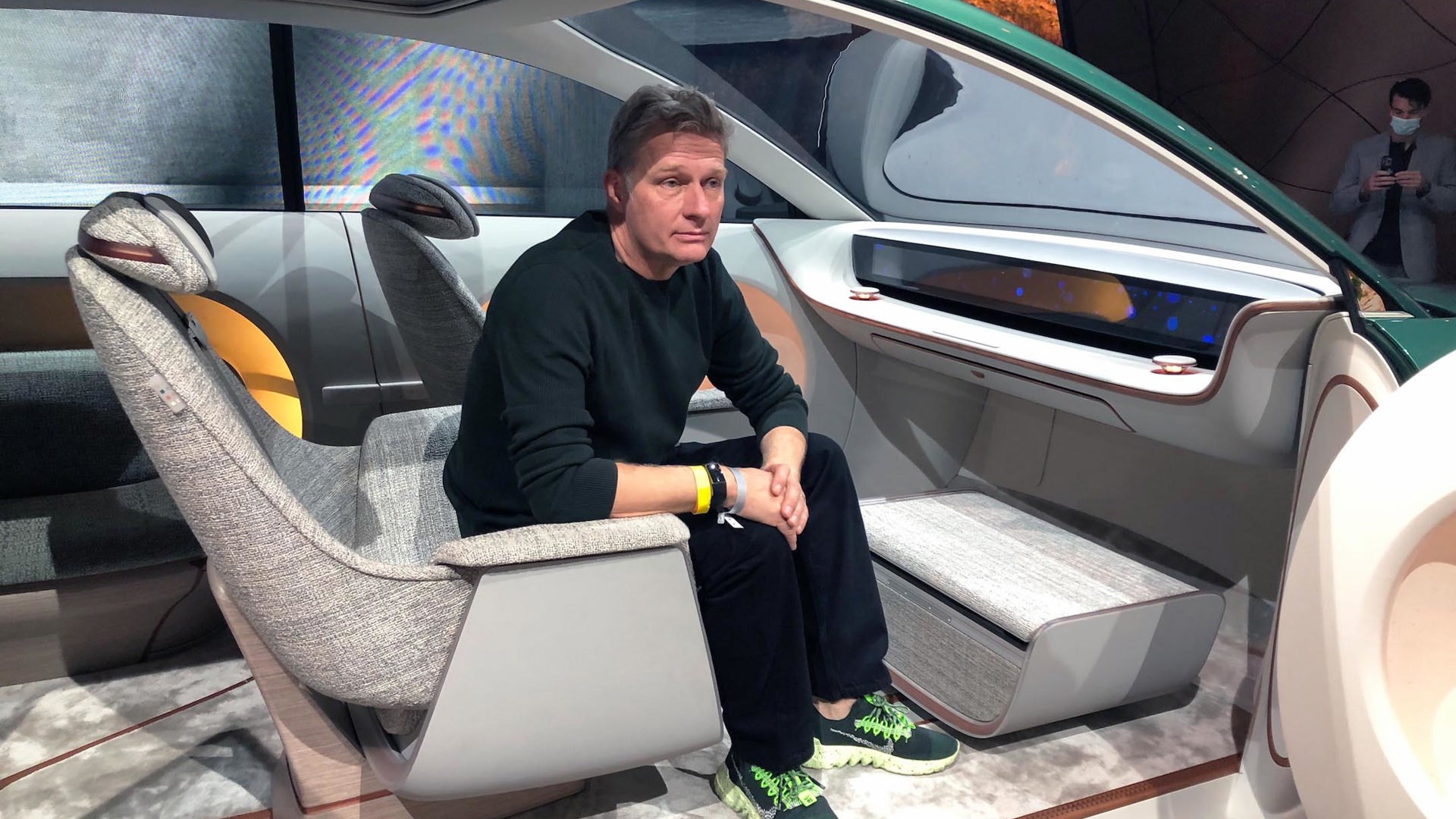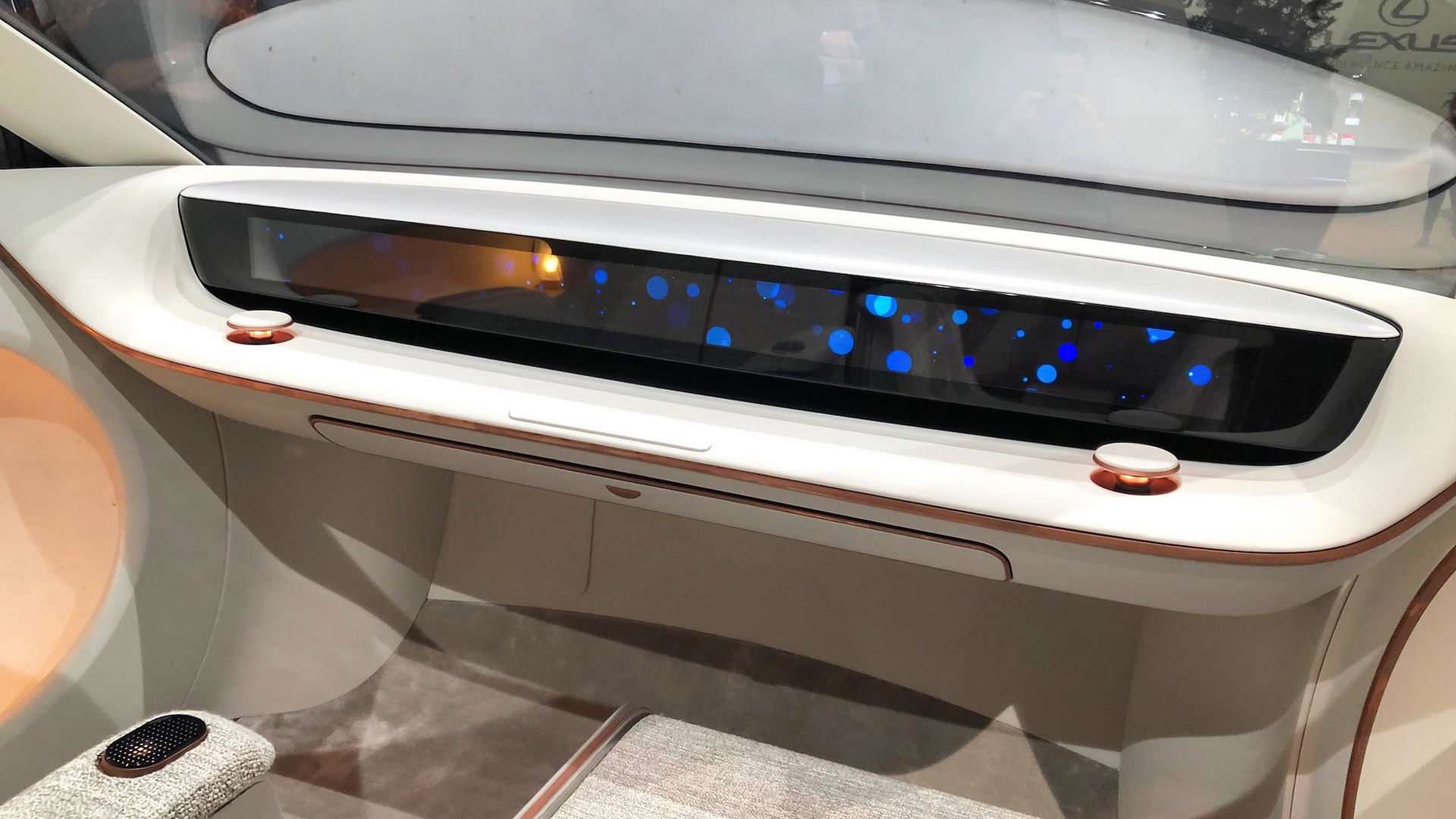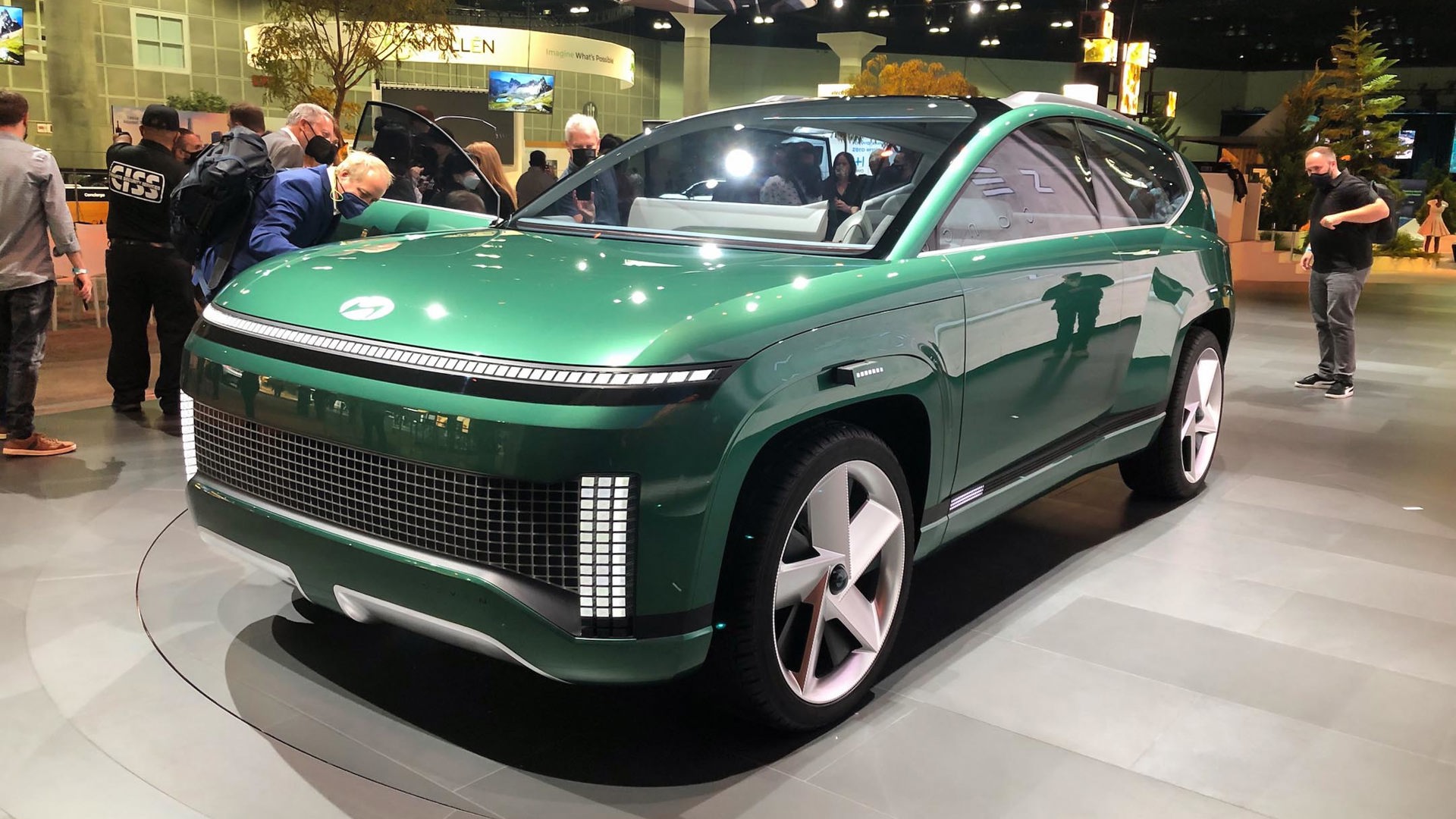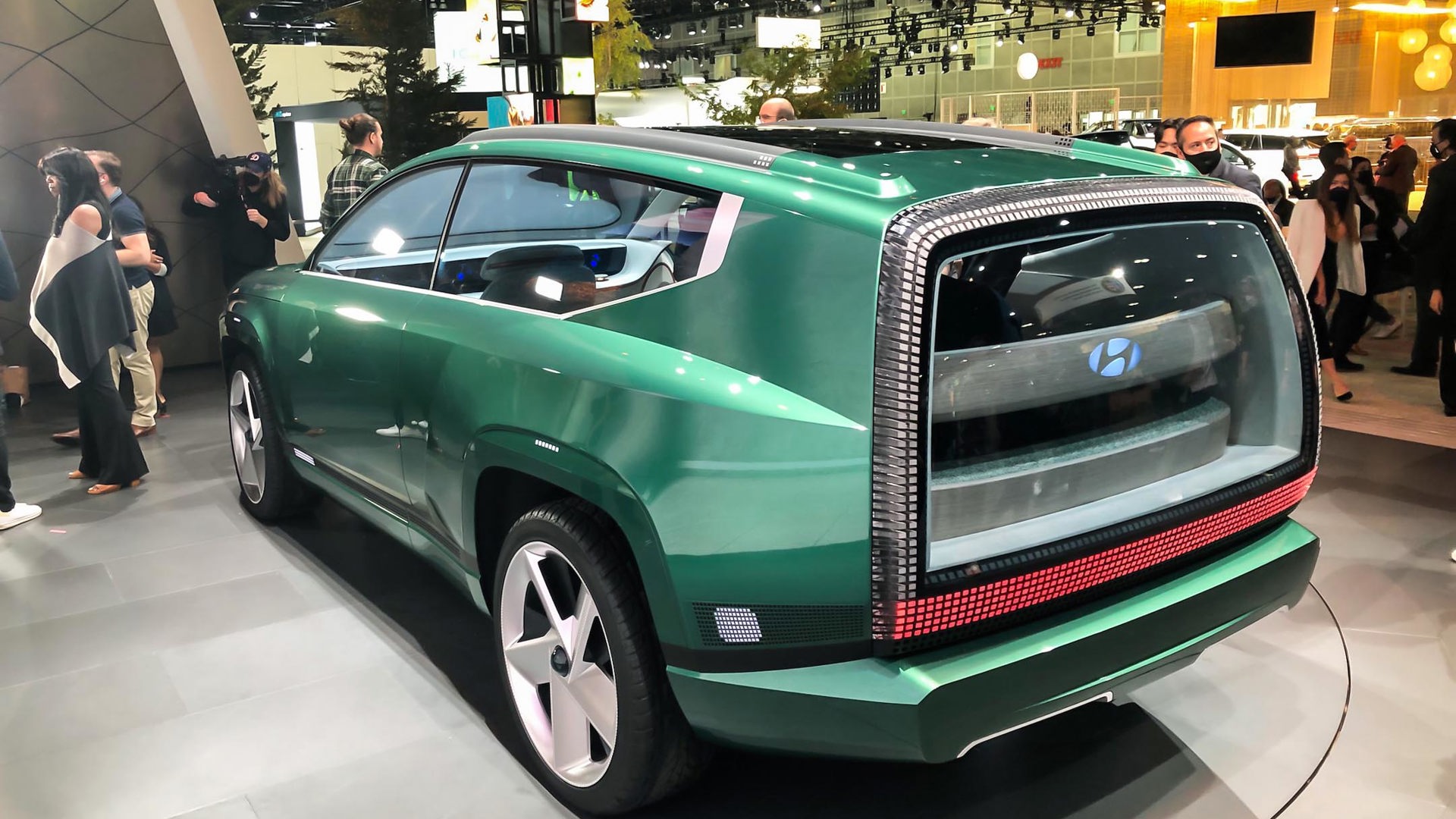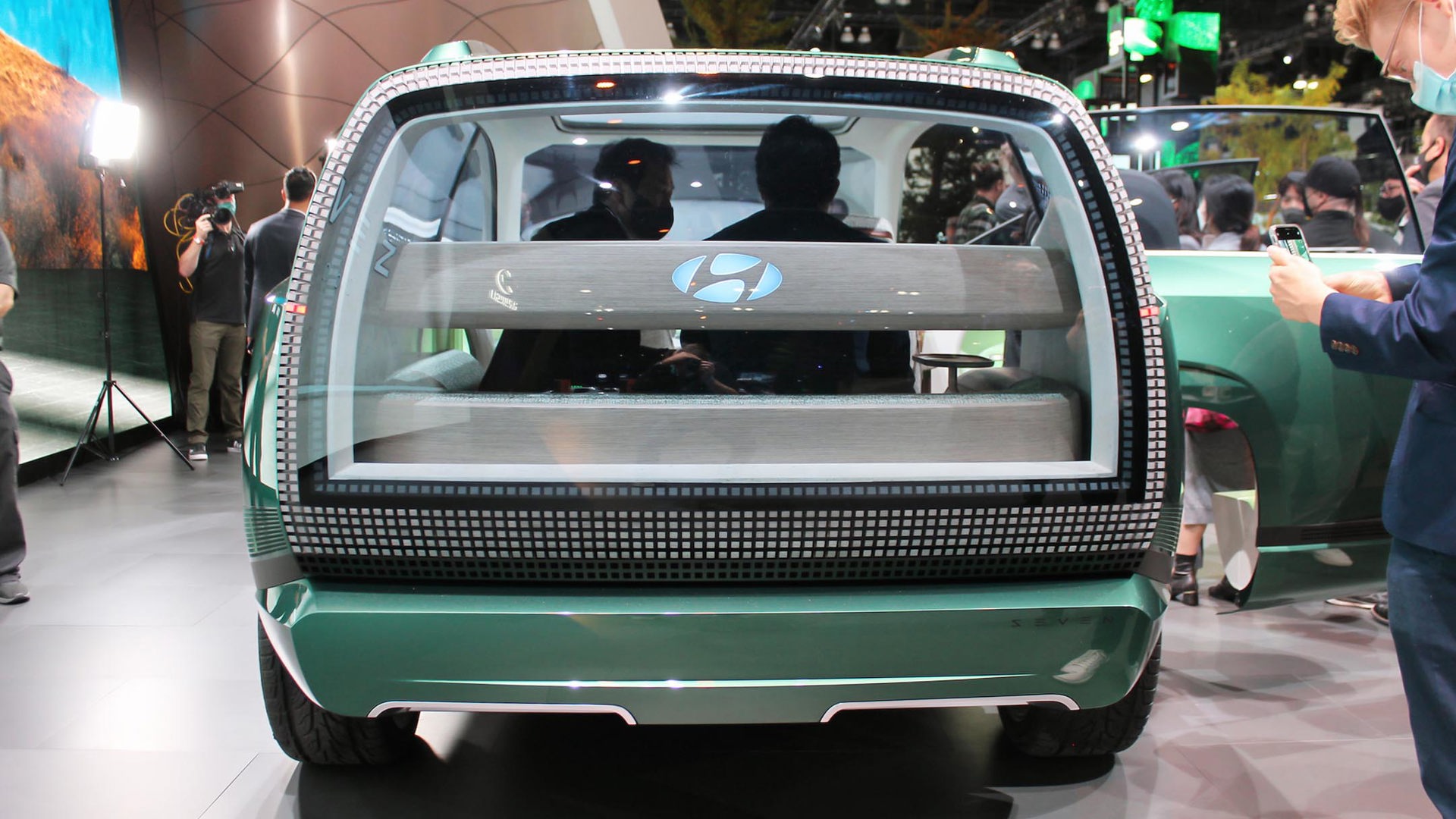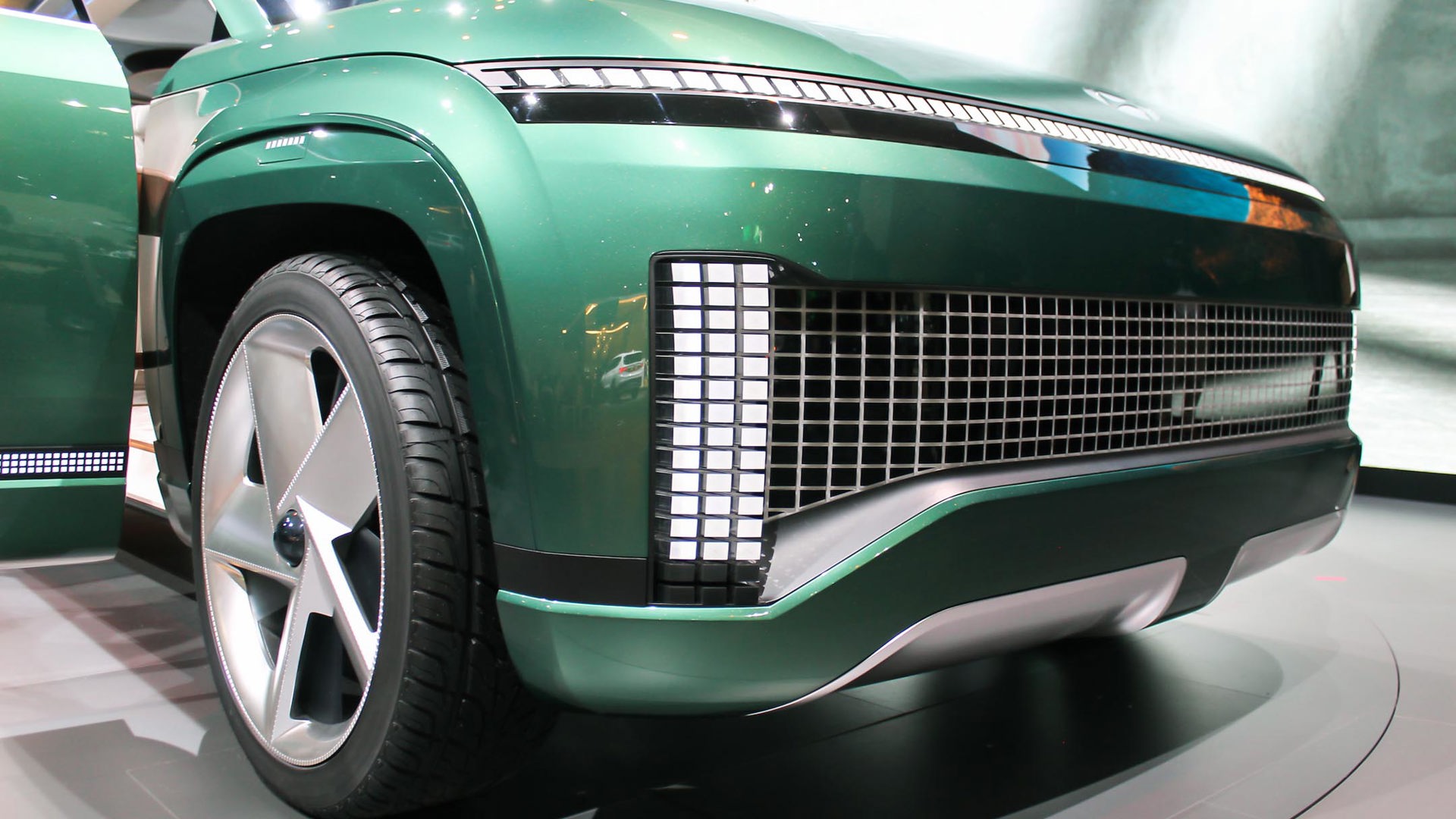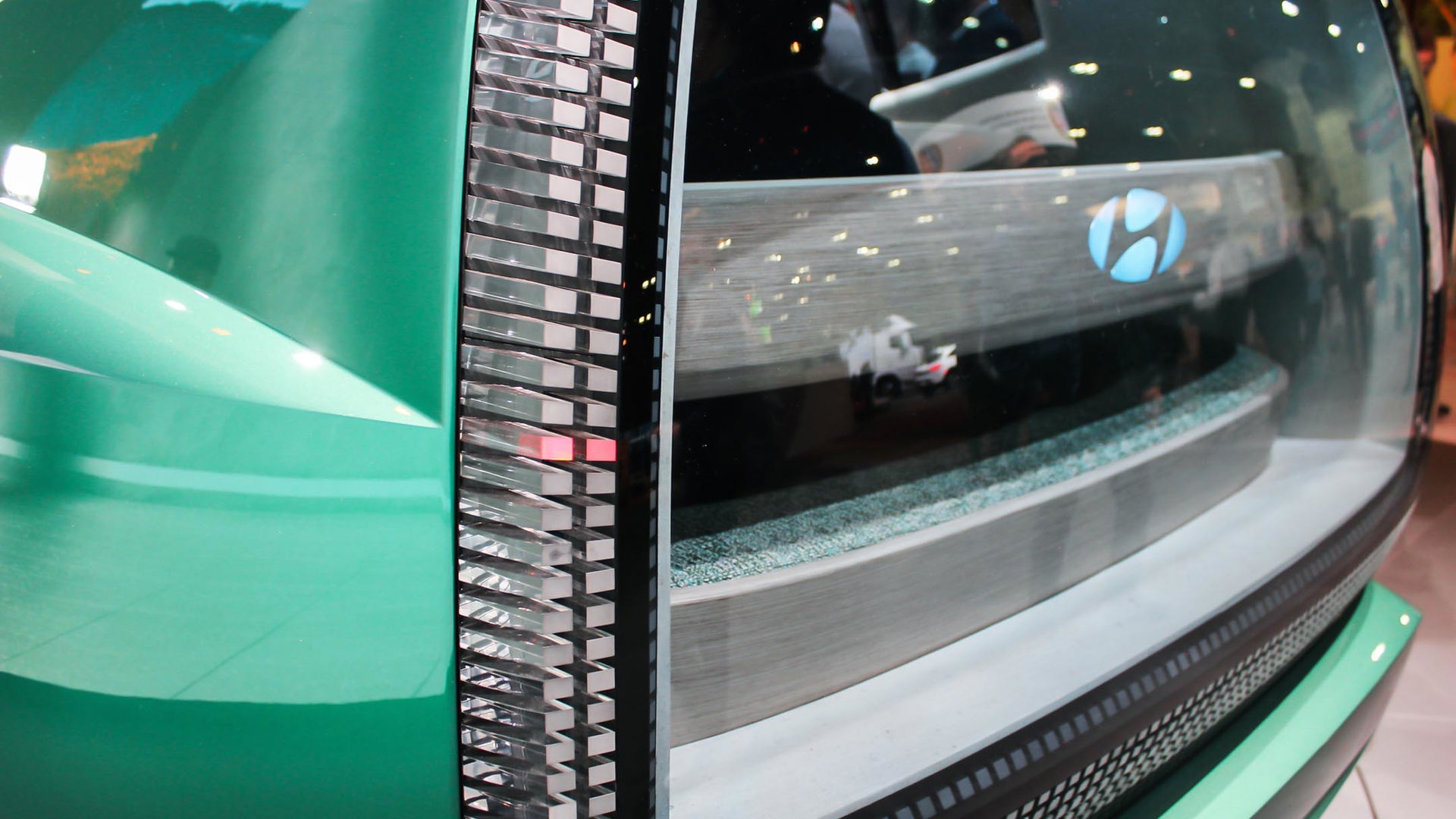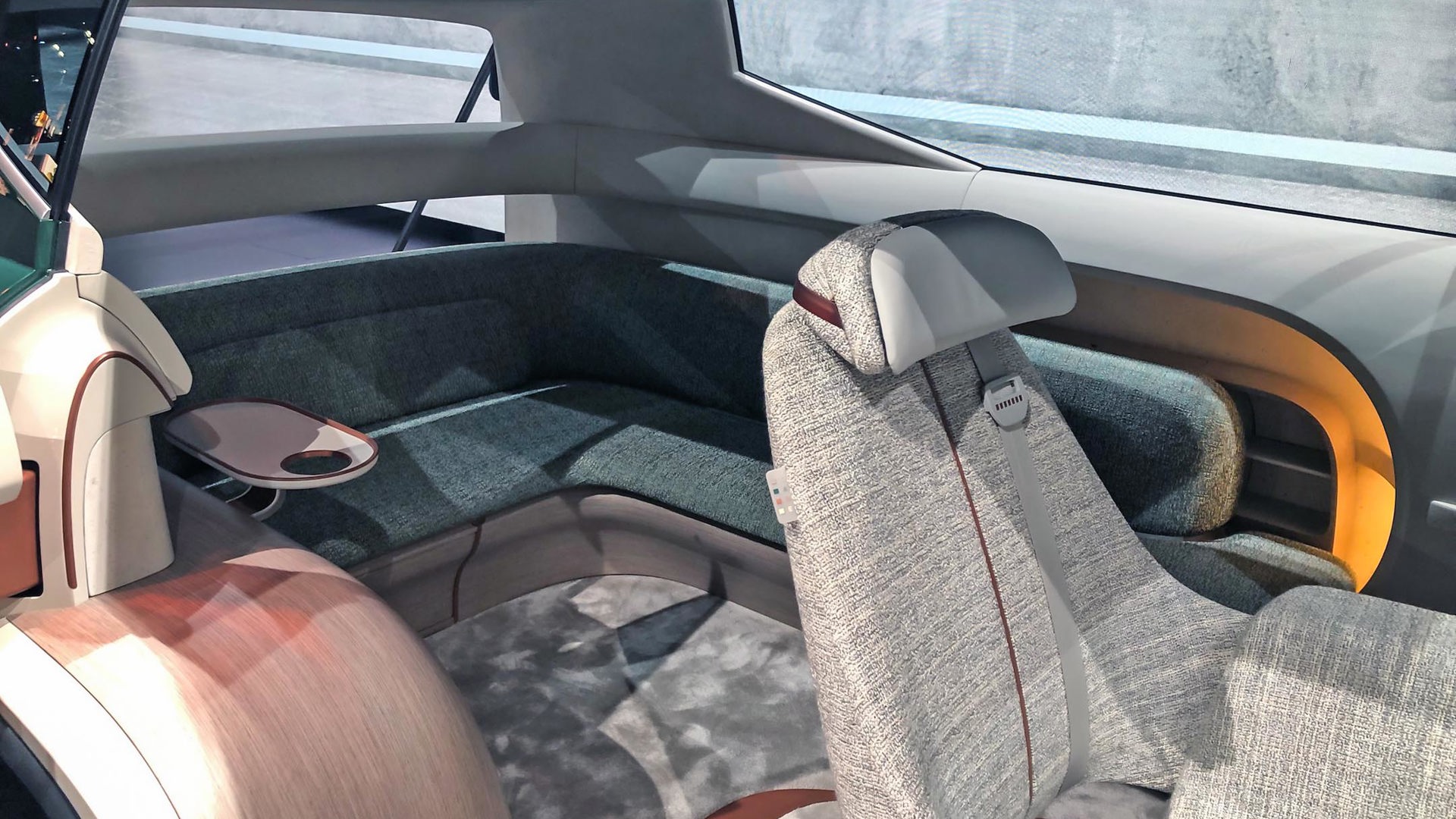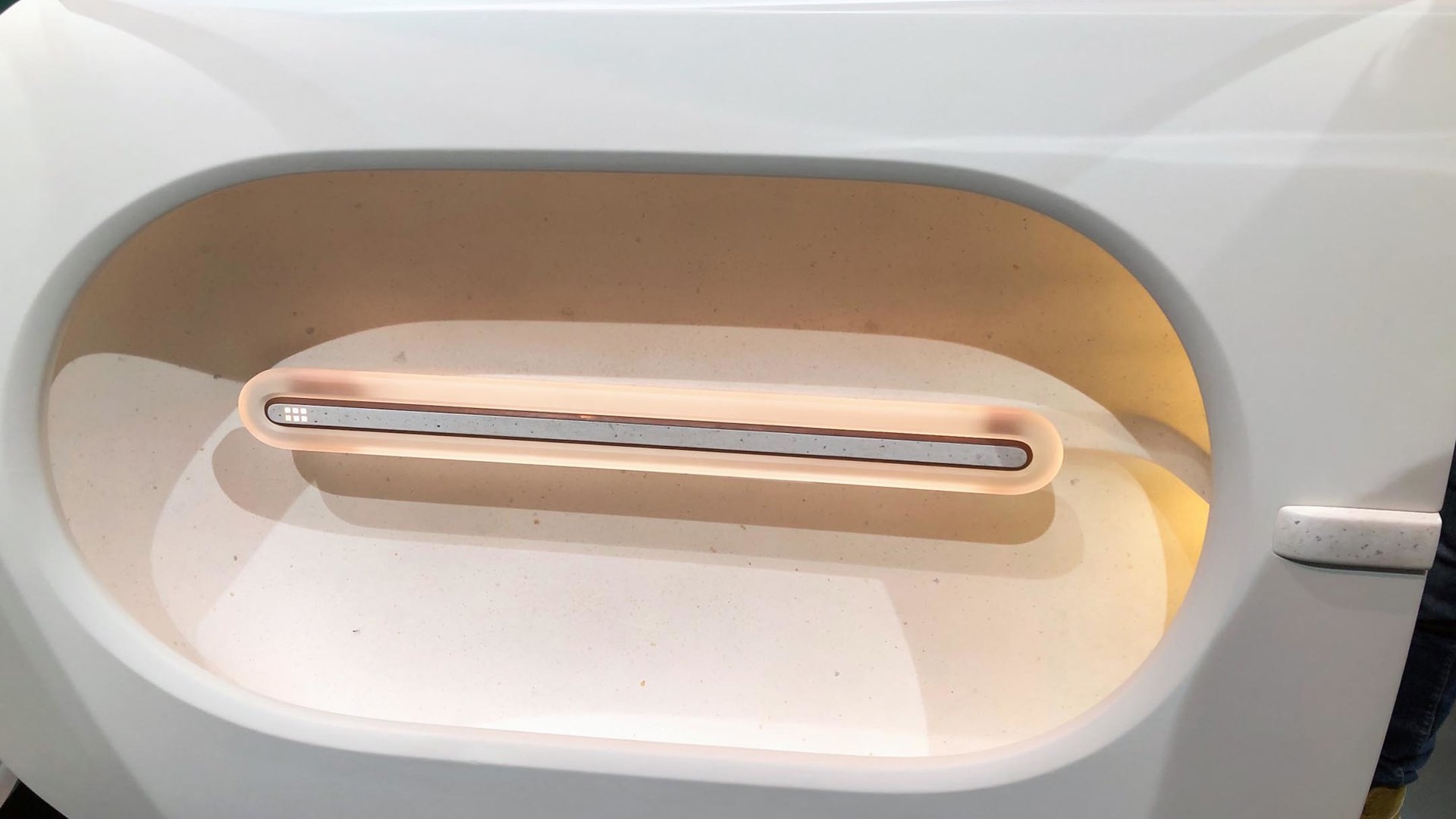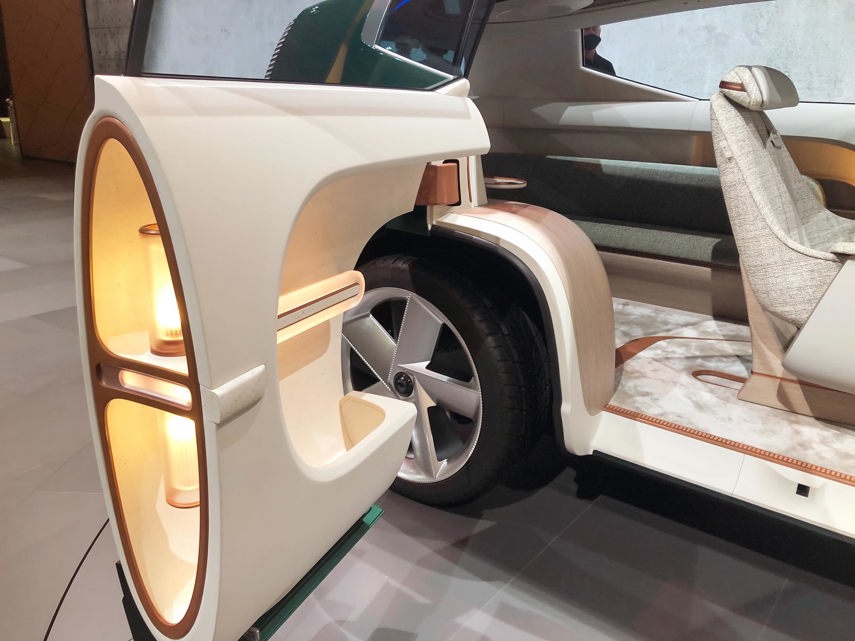Hyundai peers into its electric future with the SEVEN SUEV (Sport Utility Electric Vehicle) Concept that was unveiled at the Los Angeles auto show. As part of Hyundai’s Ioniq dedicated EV brand, the SEVEN Concept is built on the E-GMP (Electric Global Modular Platform), and bristles with forward thinking design, tech, and sustainable materials.
With a wheelbase that stretches 3.2 m, the SEVEN makes the most of its flat EV architecture to provide a spacious “lounge-like” experience within. The SEVEN is handsome and purposeful, featuring a low nose and sweeping roofline that resolves at a striking “boat tail” derriere. Despite it being a concept, the third Ioniq vehicle to roll out will indeed be a full-size SUV, so consider the SEVEN’s profile and footprint a harbinger of things to come.
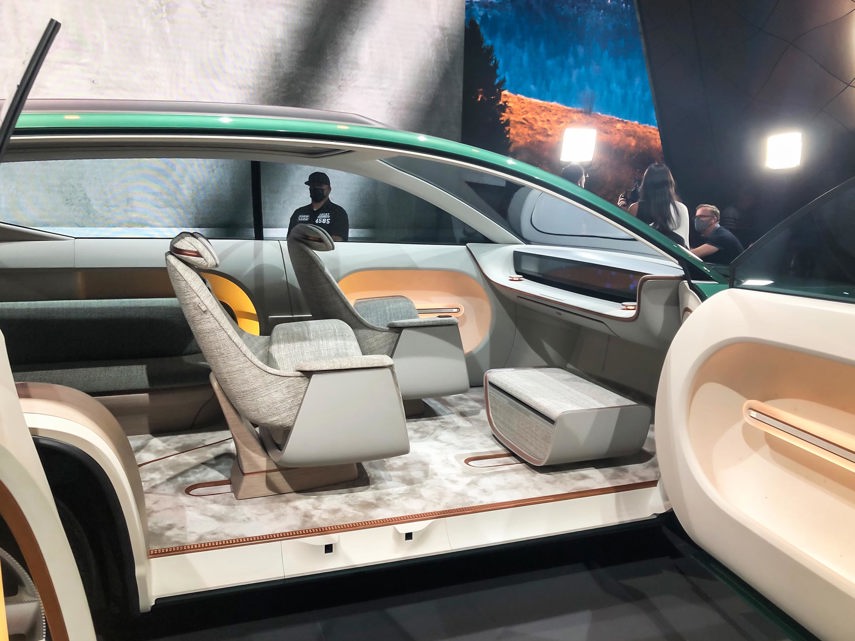
Lead designer Simon Loasby cites the SEVEN’s surfacing as being Teutonic in its tension. “The front section looks like we almost extruded it like an aircraft. And the pixel lighting on the front and on the rear is the design element that ties all our Ioniq products together. It’s a connecting point – like the spices [of a style of cuisine].”
The wheels are pushed out to the corners and feature active air flaps that adjust depending on brake-cooling or low-drag requirements. The driver’s side has a single door whereas the passenger side features pillarless coach doors that open to reveal an interior devoid of the traditional row-based seating. With a cool mid-century modern aesthetic, we see swiveling fabric lounge chairs and a curved rear bench seat, and this seat arrangement can be customized depending on passenger’s preferences and whether or not the driver is, um, driving.
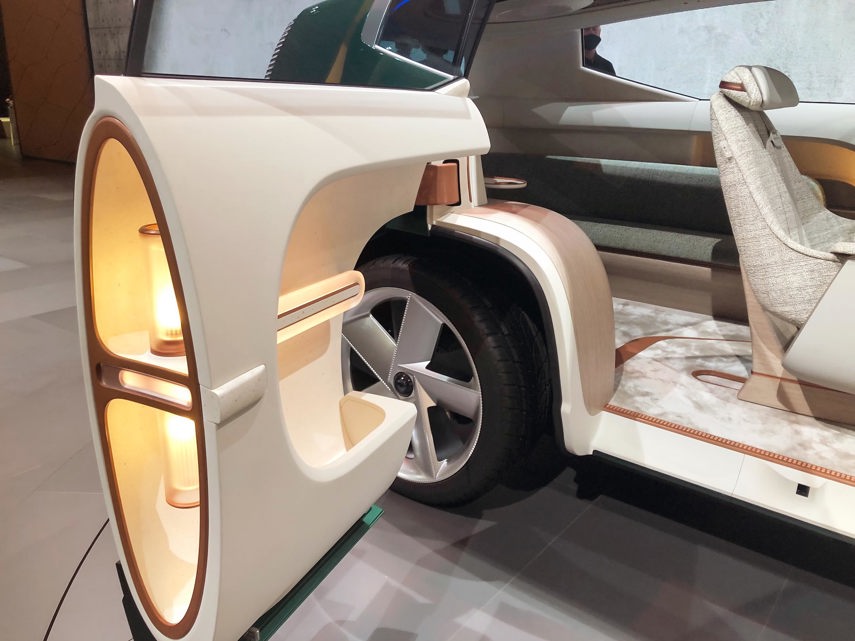
While most automakers have gone quiet on the self-driving front, the SEVEN beats the autonomous drum with fervour. You won’t find a steering wheel in here – the driver’s seat features a control stick that retracts when not in use, and said seat can spin around enabling the driver to face their passengers.
The Universal Island’s SmartHub graphical user interface is where untold connectivity unfolds through a 27-inch screen. A mini-fridge provides refreshments and for those who have wished their vehicle had individual shoe-care compartments that could “refresh passenger’s footwear”, Hyundai has answered the call. Overhead, a panoramic OLED screen developed in conjunction with Korean electronics giant LG blankets the entire ceiling, opening up a world of possibilities for interior ambience – everything from a calming night sky to Sunday night football. If you wish to see what’s actually going on above, sky facing cameras will project that image.
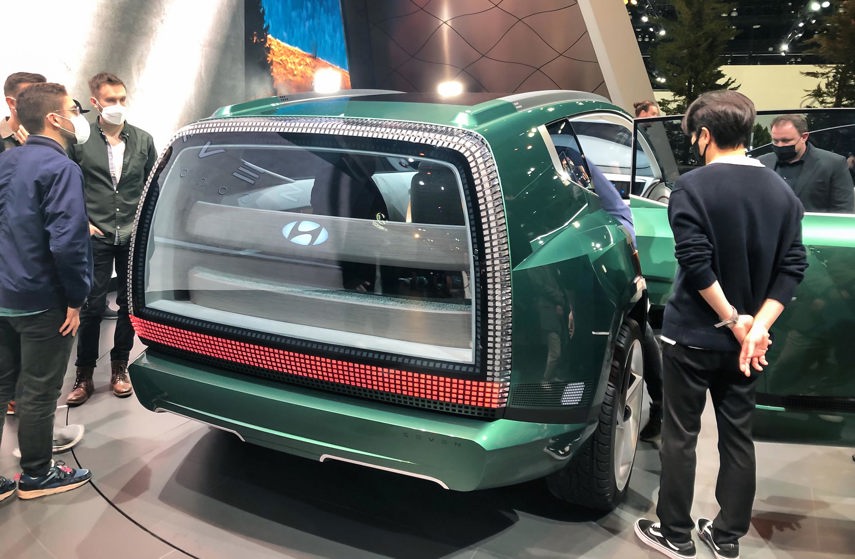
With a focus on environmental responsibility and sustainability, the SEVEN’s exterior gets “bio-paint”, and the cabin is awash in hygienically recycled and renewable materials like bamboo wood and carpet, bio-resin, and mineral plaster panels made from compressed waste material. Upholstery fabric has fine copper threading throughout that adds anti-bacterial properties, and the SEVEN’s Hygiene Airflow System draws from passenger airplane technology in its ability to manage airflow with an eye on reducing cross-contamination among passengers and isolating the airflow between front and rear occupants. Once the vehicle is free of passengers, it is scrubbed clean with UVC (ultraviolet C) sterilization.
The SEVEN will accommodate numerous battery configurations and can be either rear- or all-wheel drive. No battery size or power output is cited, but the targeted range for the SEVEN is over 300 miles (500 km), and like the Porsche Taycan this Hyundai concept gets an 800-volt charging system.
As with most concept vehicles, Hyundai’s SEVEN Concept mixes reality with flights of design fancy. But as designer Loasby suggests “You can imagine the relationship to our upcoming production car.”
